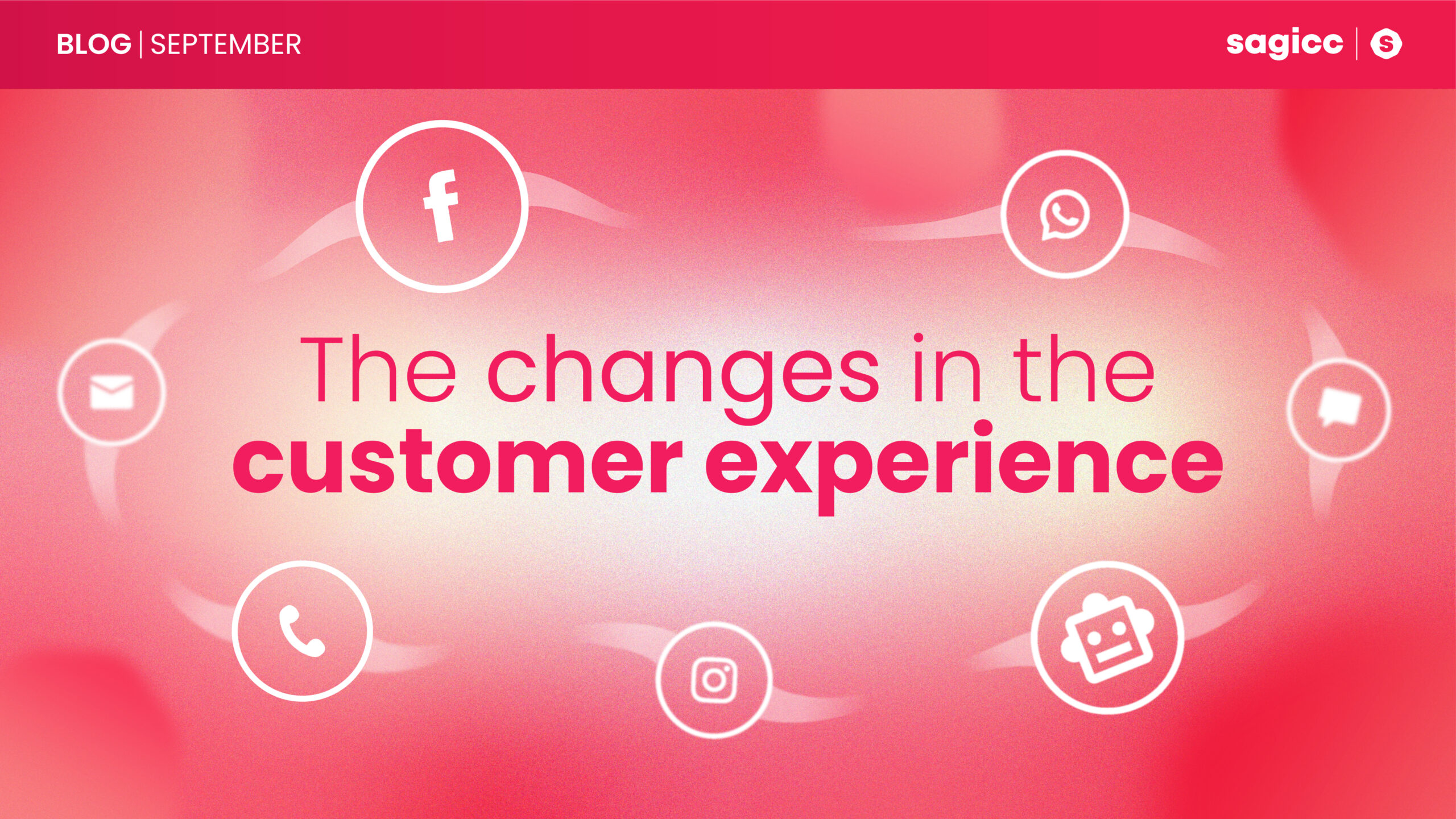Digital interactions have become something innovative; Customer Experience (CX) has evolved in ways that would have been unimaginable just a few years ago. As time goes by, companies have adopted and expanded their digital communication channels, transforming customer experience from a simple tool into a key element for businesses to gain a competitive edge.
In this blog, you will explore how customer experience has evolved over time across various digital communication channels, how companies are adapting, and what trends are shaping the future of CX.
The Beginning of CX in Digital Channels
Email: The First Digital CX Channel
Email was one of the first digital channels used for customer service. It allowed companies to respond to customer questions or concerns quickly, unlike traditional methods such as letters or phone calls. For a time, it represented a significant improvement, but challenges arose with this channel. The influx of large volumes of emails made the customer experience slow and frustrating, making it no longer as quick and efficient as initially proposed.
The Early Websites: Navigation and Self-Service
The first corporate websites provided customers with access to important information about products, services, or support, marking a turning point toward self-service. The evolution of web design and the implementation of a FAQ section allowed customers to find answers to their concerns themselves. However, this phase lacked personalization and had a limited user experience, leaving customers dissatisfied.
The Revolution of Social Media
The Emergence of Customer Service on Social Media
Social media revolutionized customer experience by introducing a direct and public communication channel between businesses and customers. This not only allowed issues to be resolved faster but also gave companies the opportunity to publicly demonstrate their commitment to customer service. However, this also meant that businesses had to be more careful with their tone and response speed.
Personalization and Immediacy
With the new era of social media, customers began to expect immediate and personalized responses. Many companies that could not meet this expectation faced criticism and damage to their public image. This shift led companies to invest in tools that improved their ability to manage interactions across all social media channels efficiently.
The Era of Chatbots and Automation
The Introduction of Chatbots
The arrival of chatbots marked a milestone in the evolution of CX. Artificial intelligence allowed companies to provide 24/7 assistance without the need for a human agent. Initially, these chatbots were simple and capable of handling only basic inquiries. However, as time progressed, they have become more sophisticated, utilizing natural language processing (NLP) and machine learning to provide accurate responses.
Automation and Operational Efficiency
With the advent of automation, operational efficiency improved not only by reducing agents’ workload but also by enhancing the customer experience by decreasing wait times and response times. According to a study, chatbots are expected to save companies over $8 billion annually in customer service costs by 2026. This figure underscores the importance of automation in the evolution of CX.
Omnichannel: The Future of CX
One of the significant advancements in customer experience has been the shift toward an omnichannel experience. Unlike a multichannel experience, where communication channels operate independently, omnichannel integrates all channels to provide a seamless and consistent experience. This means that a customer can start an interaction in one channel and continue it in another without having to repeat their issue, as the conversation’s traceability remains in the same chat.
The Role of Artificial Intelligence in Omnichannel
Artificial intelligence (AI) plays a crucial role in the successful implementation of an omnichannel strategy. Through AI, companies can analyze customer data in real time, predict behaviors, and provide personalized experiences across all channels. According to a report, companies that successfully implement omnichannel strategies can improve customer retention by 89% and increase customer satisfaction by 33%.
Challenges of Omnichannel
Despite its advantages, omnichannel also presents challenges. Integrating multiple channels and ensuring that all touchpoints provide a consistent experience requires significant investments in technology and training. Moreover, the need to protect customer data across all channels adds an additional layer of complexity. However, companies that overcome these challenges are rewarded with stronger customer loyalty and a competitive advantage.
Customer Experience in the Post-Pandemic World
The Acceleration of Digital Transformation
With the arrival of the COVID-19 pandemic, the digital transformation process accelerated for many companies, also impacting their evolution of customer experience.
Physical restrictions forced businesses to adopt and expand their digital channels, from e-commerce to video calling platforms. This completely changed how companies interact with their customers, altering customer expectations, which now demand a fast and digital experience.
The Focus on Empathy and Personalization
The pandemic also highlighted the importance of empathy in CX. Companies that demonstrated empathy and understanding for their customers’ situations while offering personalized solutions saw increased loyalty and customer satisfaction.
The Role of Sagicc in the Evolution of CX
Empowering Omnichannel
As an omnichannel customer service platform, Sagicc is at the center of this evolution in CX. Sagicc enables companies to manage all their customer interactions from a single place, integrating channels such as email, chat, social media, and more to provide a consistent and seamless customer experience. This is crucial in a world where customers expect to switch from one channel to another without losing the traceability of the conversation.
Sagicc also leverages artificial intelligence and automation to improve the efficiency and personalization of customer service. With chatbots and data analytics tools, Sagicc allows companies to respond quickly to customer inquiries. This combination of AI and automation not only enhances customer satisfaction but also reduces operational costs.
Sagicc understands the importance of empathy in customer service. The platform is designed for agents to have a complete view of a customer’s interaction history, enabling them to provide a more personalized and human service. This is vital in the post-pandemic context, where empathy and personalization are key to a successful customer experience.
The evolution of customer experience across different digital communication channels has transformed from simple email to new omnichannel strategies driven by AI. As customer expectations evolve, companies must adapt and implement these new technologies to remain competitive.
Sagicc, as an omnichannel platform, helps companies embrace this ever-changing landscape, offering the necessary tools and technologies to deliver an exceptional experience to customers.






